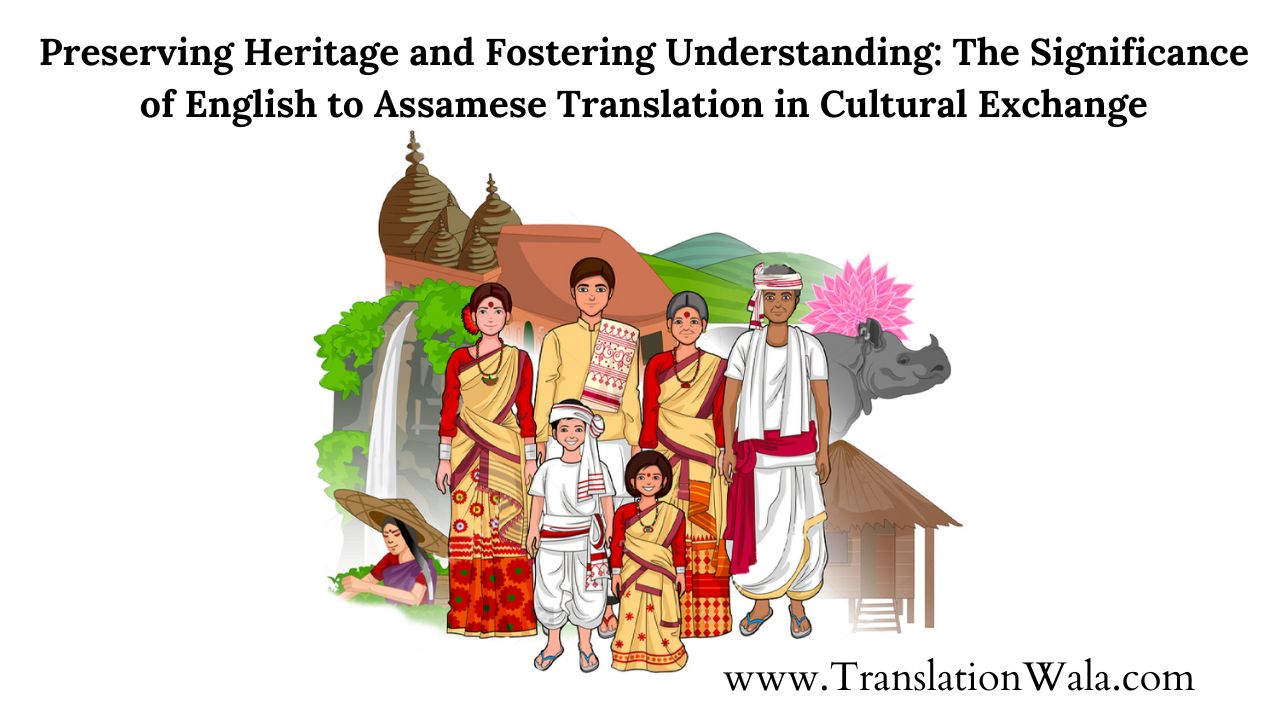A Bridge Between Languages and Cultures
Technology and globalization are making the world more linked, and it’s never been clearer how important it is to share cultures. Language, which is the basis of conversation, is very important for making this sharing possible and helping people from different backgrounds understand each other. In particular, English to Assamese Translation is a very important way to connect two very different languages and cultures.
Preserving Assamese Heritage
Assamese is an important part of India’s language tapestry. It has a rich cultural history and is spoken by over 15 million people in the northeastern state of Assam. Its long literary history, which includes old texts and folk songs as well as current writing, shows how talented the area’s artists are. However, the fact that English is becoming more popular in today’s international world makes it harder to protect this language tradition.
English to Assamese Translation is an important part of keeping Assamese writing alive and making it available to more people. Translators make sure that Assamese literature and culture don’t get lost in the English-speaking world by translating works from Assamese to English. Heritage protection is important for keeping cultural variety and making the world’s literature scene richer.
Fostering Understanding and Dialogue
Translation from English to Assamese not only protects tradition, but it also helps people from Assamese and English-speaking groups understand each other and talk to each other. Assamese people can access a huge library of information, ideas, and points of view from all over the world by turning English works into Assamese. This access helps people from different cultures understand each other, breaks down boundaries, and pushes them to talk to each other.
Assamese works that have been translated into English also give people from other countries a chance to learn more about Assam’s past, customs, and way of life. Being exposed to different cultures helps people understand, value, and accept different ways of life, which makes the world a better place for everyone.
Also Read: Beyond Words – The Cultural Nuances of English to Assamese Translation
Challenges and the Role of Technology
However, English to Assamese Translation isn’t always easy. English and Assamese are from different language groups. English has a large vocabulary and uses the Latin script, while Assamese is known for having a lot of different sounds and uses the Assamese script. Because of these differences, it can be hard to correctly communicate the subtleties and societal settings of the original text.
Machine translation tools, in particular, have become more and more important in helping people speak different languages. Even though computer translation has come a long way, it is important to know what it can’t do. Language is very complicated, especially when it comes to national background and idiomatic phrases. This is why human linguists are often needed.
To make sure that translations are correct and make sense, they must be done by skilled professionals who know a lot about both the English and Assamese languages and cultures. It is very important for them to be able to understand the subtleties of the original text and communicate them clearly in the target language. This keeps the message true and helps people from different cultures understand each other better.
Conclusion
This English to Assamese version shows how language can bring people together, protect traditional history, and help people understand each other better. Translation is an important part of supporting cross-cultural conversation and adding to the rich mix of cultures around the world because it bridges the language gap between these two very different customs. Translation will become even more important as the world becomes more linked. It makes sure that the views of different groups are heard and understood.
